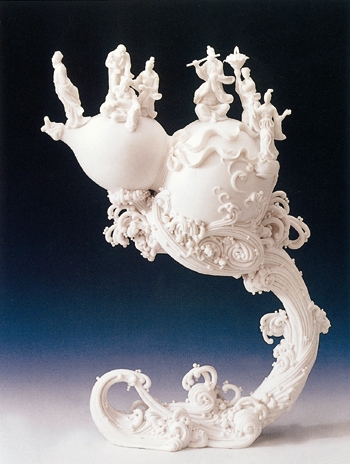Dehua porcelain dates back to the Song Dynasty (960-1279), and saw the booming development after the Ming Dynasty (1368-1644). AmongDehua porcelains, white figures of Buddha were the most famous, representing the highest firing technique of Dehua Kiln at that time. With refined design and elegant tough, the white porcelain of Dehua Kiln became a representative genre of Chinese porcelain industry and was reputed as the Bright Pearl of Porcelain in the World.

Ivory color Chinese porcelain first produced in Dehua Kiln in Fujian Province in the Ming Dynasty
The body of its while porcelain was low in iron content and high in potassium content, the color of the glazed surface was of bright, smooth luster, and milky as frozen fat. It was thus often called as "lard white" or "ivory white".Solid and smooth, Dehua porcelain is resistant to both heat and cold. One type of "Jianbai" porcelain in particular has a sparkle and luster even more stunning than white jade. Its ivory-white color and superb workmanship make it a favorite of art lovers. Dehua white porcelain used to be one of the major varieties for export in various dynasties. In the West it was named as "Chinese white porcelain" or "Marco Polo porcelain". Its common shapes were burner, cup,Zun, andDing, and the porcelain figurine was also remarkably exquisite. Distinguished ceramic craftsmen include He Chaozong, Zhang Shoushan, and Lin Chaojing.










